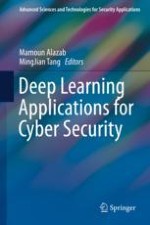2019 | OriginalPaper | Buchkapitel
Forensic Detection of Child Exploitation Material Using Deep Learning
verfasst von : Mofakharul Islam, Abdun Nur Mahmood, Paul Watters, Mamoun Alazab
Erschienen in: Deep Learning Applications for Cyber Security
Aktivieren Sie unsere intelligente Suche, um passende Fachinhalte oder Patente zu finden.
Wählen Sie Textabschnitte aus um mit Künstlicher Intelligenz passenden Patente zu finden. powered by
Markieren Sie Textabschnitte, um KI-gestützt weitere passende Inhalte zu finden. powered by
